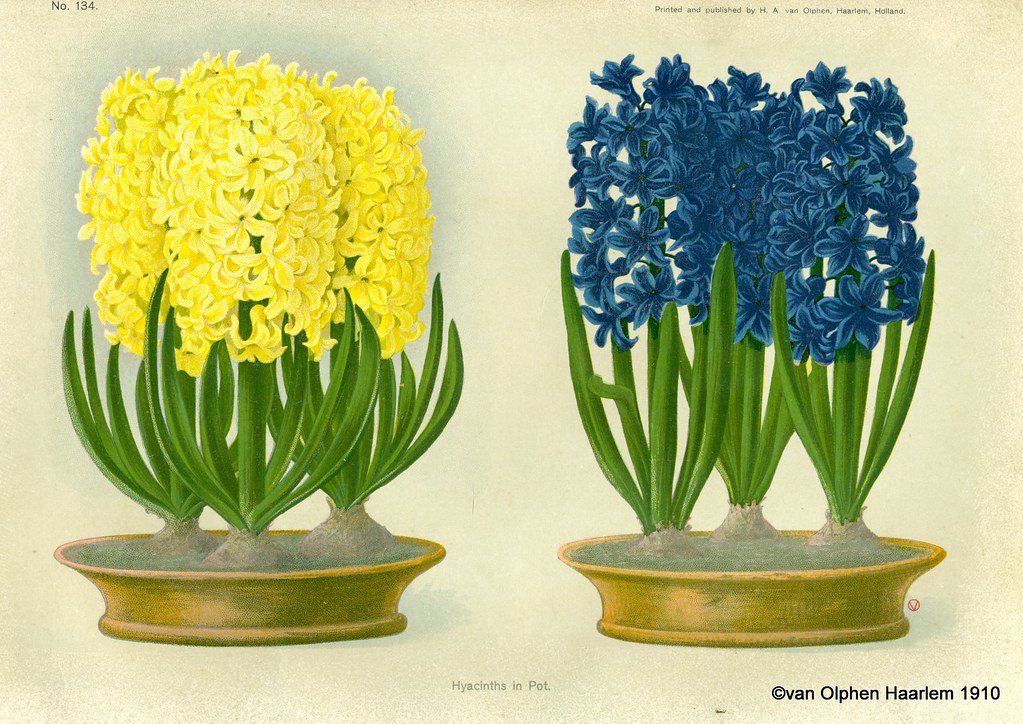Growing Hyacinths in Winter
Hyacinth (Hyacintus orientalis) is undoubtedly the most popular bulb to grow indoors for winter flowering. Here is how to do it – it is rewarding and not at all difficult.
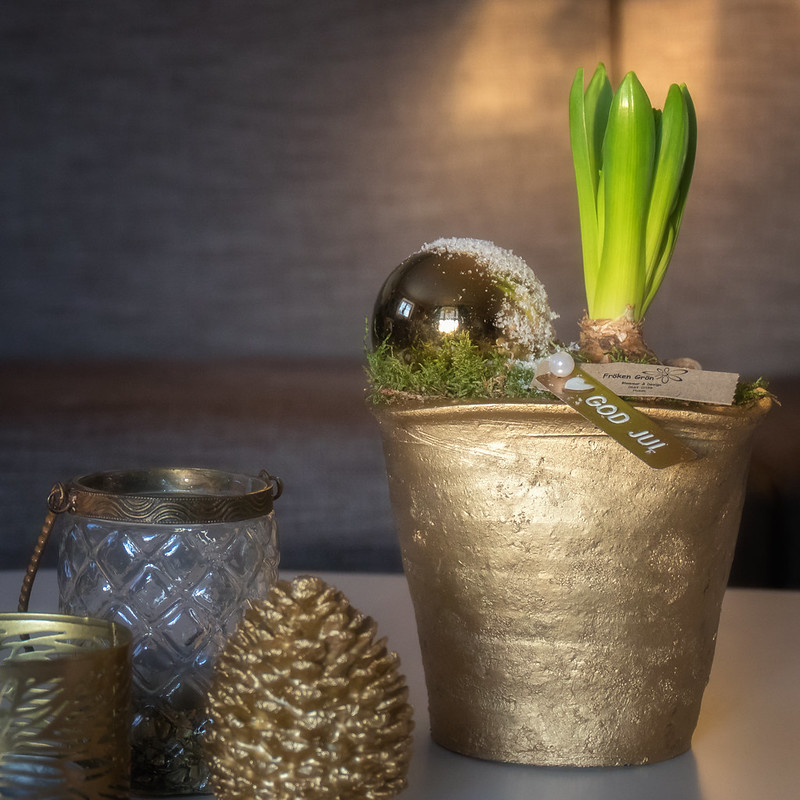 If the weather is likely to be mild in autumn, it is safer to use ‘prepared’ bulbs, that is bulbs that have been already exposed to cold temperature necessary for the development of flowers. Such bulbs are sold in shops in autumn, and it is possible to buy different varieties, though usually only single, rather than double, for single hyacinths are much better suited for flowering out of season. Though the bulbs are ‘prepared’, they still need to be grown in pots for about two and a half months to develop roots.
If the weather is likely to be mild in autumn, it is safer to use ‘prepared’ bulbs, that is bulbs that have been already exposed to cold temperature necessary for the development of flowers. Such bulbs are sold in shops in autumn, and it is possible to buy different varieties, though usually only single, rather than double, for single hyacinths are much better suited for flowering out of season. Though the bulbs are ‘prepared’, they still need to be grown in pots for about two and a half months to develop roots.
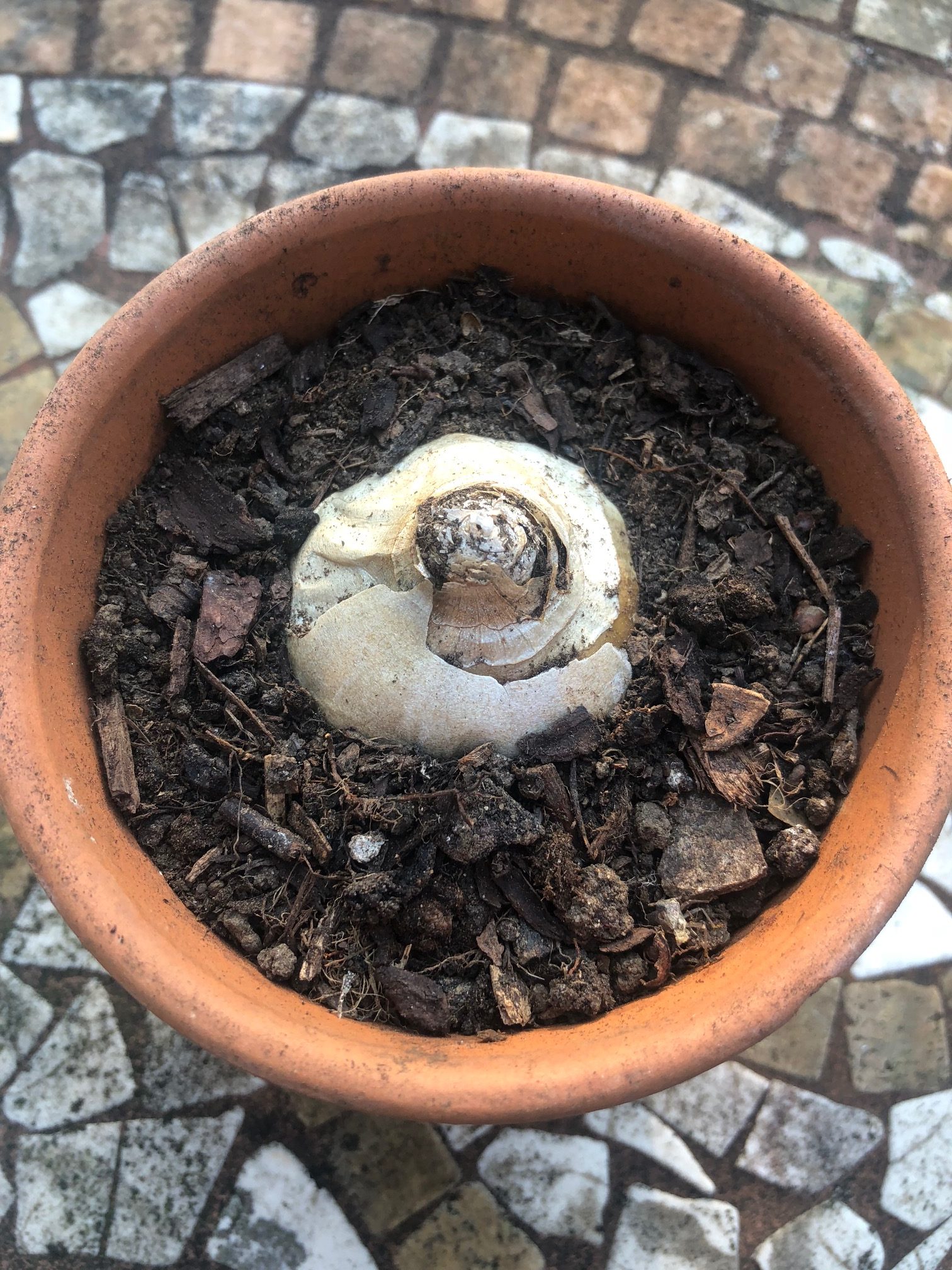 Bulbs are usually planted in individual pots about 10cm in diameter. If a larger pot for several hyacinths is used, the bulbs should sit close together, but not touch. It is possible to use any reasonable garden soil, but ideally it should be sandy and not too rich, for example, a mixture of two parts of garden soil, one part compost and half a part sand.
Bulbs are usually planted in individual pots about 10cm in diameter. If a larger pot for several hyacinths is used, the bulbs should sit close together, but not touch. It is possible to use any reasonable garden soil, but ideally it should be sandy and not too rich, for example, a mixture of two parts of garden soil, one part compost and half a part sand.
Fill the pot loosely with soil, put the bulb on top at the centre of the pot and gently press it into the soil. Firm the soil around it and, if necessary, add more soil, so that only the upper part of the bulb is exposed. The top of the bulb should be level with the edges of the pot, leaving space for watering, that can be also later filled with moss or bark chippings for a more attractive look.
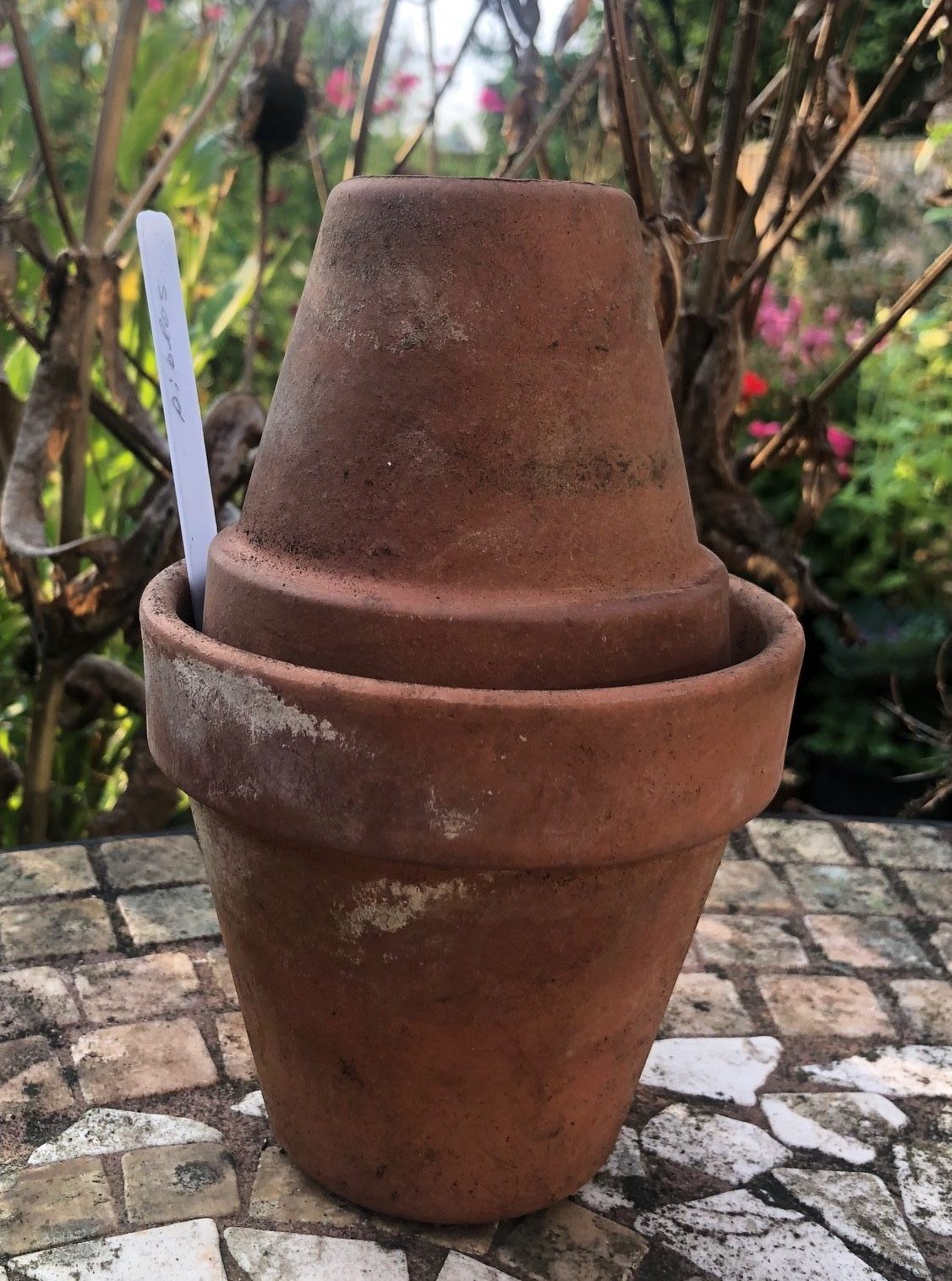 Water the pot thoroughly and cover with an empty smaller pot. Or alternatively, several pots can be placed in a container and covered with about 5cm of bark chippings.
Water the pot thoroughly and cover with an empty smaller pot. Or alternatively, several pots can be placed in a container and covered with about 5cm of bark chippings.
Put in a dark cold place (below 9C), such as a garage or shed. Check occasionally and keep moderately moist by watering or spraying bark chippings with water. In early autumn, before it gets really cold, the pots may require watering every week.
After 10-12 weeks the bulbs will have developed roots and produced, still in the darkness, shoots about 5-7cm tall. Once this has happened, bring the pots indoors and place on a window sill. It is very important not to do it too early, or the flower will not develop properly: the bulbs should be in a cold dark place until the flowering stalk has developed sufficiently.
After moving the bulbs to a window sill, water regularly – the soil should always be moist. Keep away from the sun for the first few days until the plants get accustomed to light. Turn the pot around by a half-turn frequently, so that the stalk is exposed to light on all sides and grows straight. It will flower 3-5 week later. After flowering continue to water and let the leaves die off naturally. Plant the bulbs in the garden in September next year.
Growing Hyacinths in a Glass Vase
 Since the bulb already has nutrients necessary for flowering, it is possible to grow hyacinths simply in water, without soil. Special hyacinth vases made from clear or coloured glass, some very attractive, are sold in garden centres in autumn. Since the bulbs will get very few nutrients form the water, it is best to choose the largest and heaviest specimens. For the best chance of success use ‘prepared’ bulbs of single, rather than double, varieties.
Since the bulb already has nutrients necessary for flowering, it is possible to grow hyacinths simply in water, without soil. Special hyacinth vases made from clear or coloured glass, some very attractive, are sold in garden centres in autumn. Since the bulbs will get very few nutrients form the water, it is best to choose the largest and heaviest specimens. For the best chance of success use ‘prepared’ bulbs of single, rather than double, varieties.
Fill the vases with water to just below where the base of the bulb will be positioned. The base should be very close to the surface of the water, but definitely not touching it, otherwise the bulb may rot.
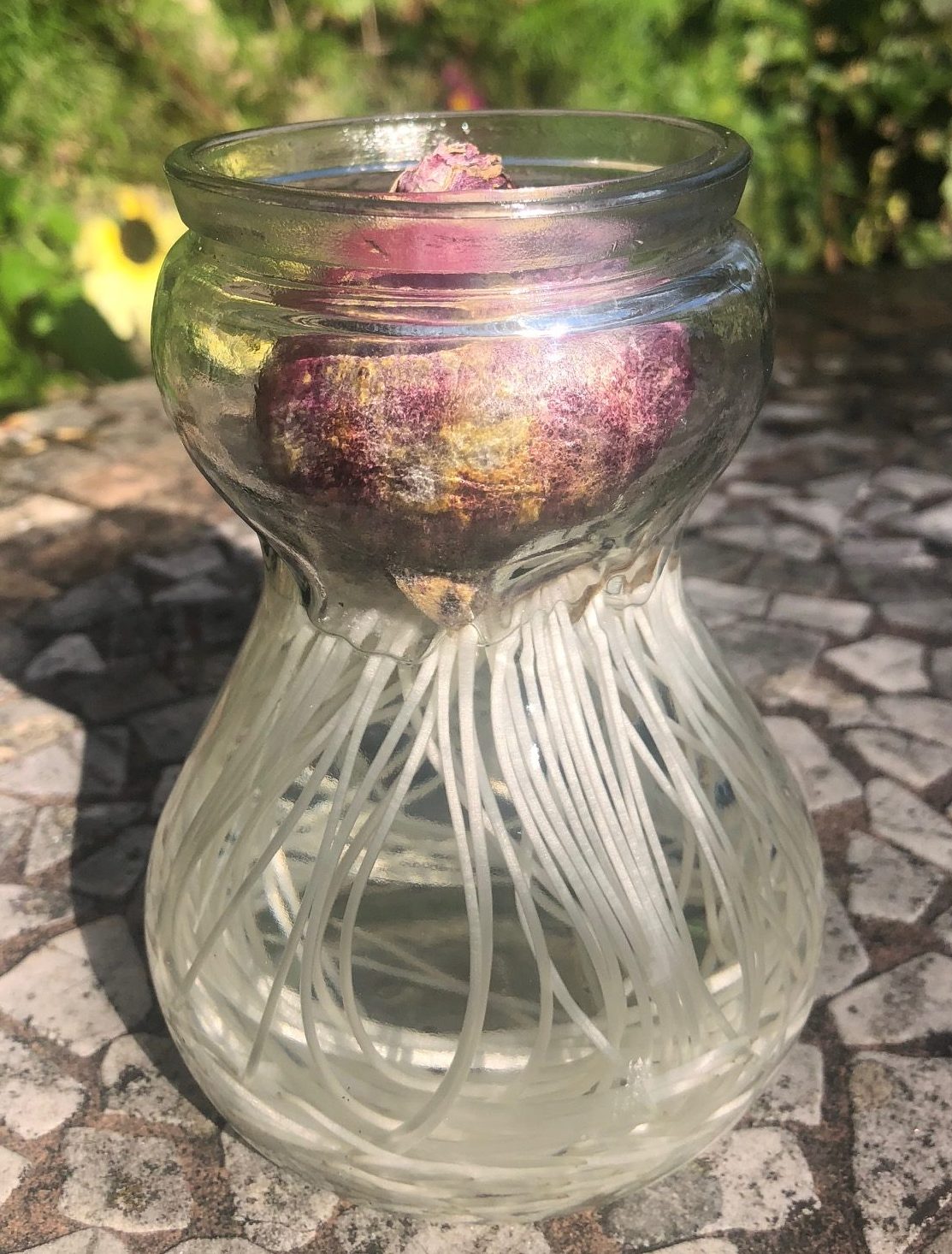 You could add a pinch of salt to the water – it will help to keep it fresh. The vases should be placed in a dark cool space, just as the pots, where in the course of 10-12 weeks the bulbs will produce roots and a strong shoot. Check them occasionally for it may be necessary to add some water, though it is unlikely that you will have to do it more than once. The bulb will ‘drink’ some water, and some water will evaporate, but the fast growing roots will fill the vase, and so the water level will go down only slowly.
You could add a pinch of salt to the water – it will help to keep it fresh. The vases should be placed in a dark cool space, just as the pots, where in the course of 10-12 weeks the bulbs will produce roots and a strong shoot. Check them occasionally for it may be necessary to add some water, though it is unlikely that you will have to do it more than once. The bulb will ‘drink’ some water, and some water will evaporate, but the fast growing roots will fill the vase, and so the water level will go down only slowly.
Once the roots have reached the bottom of the glass and the shoot is about 7-10cm tall, move the vase to a bright window sill. It is very important not to do it too early. Turn by a half-turn frequently, so that the flower grows straight. Bulbs grown in this way develop slower than in pots, and it happens occasionally that they do not produce roots. It is best to plant such bulbs in pots where they usually quickly develop roots.
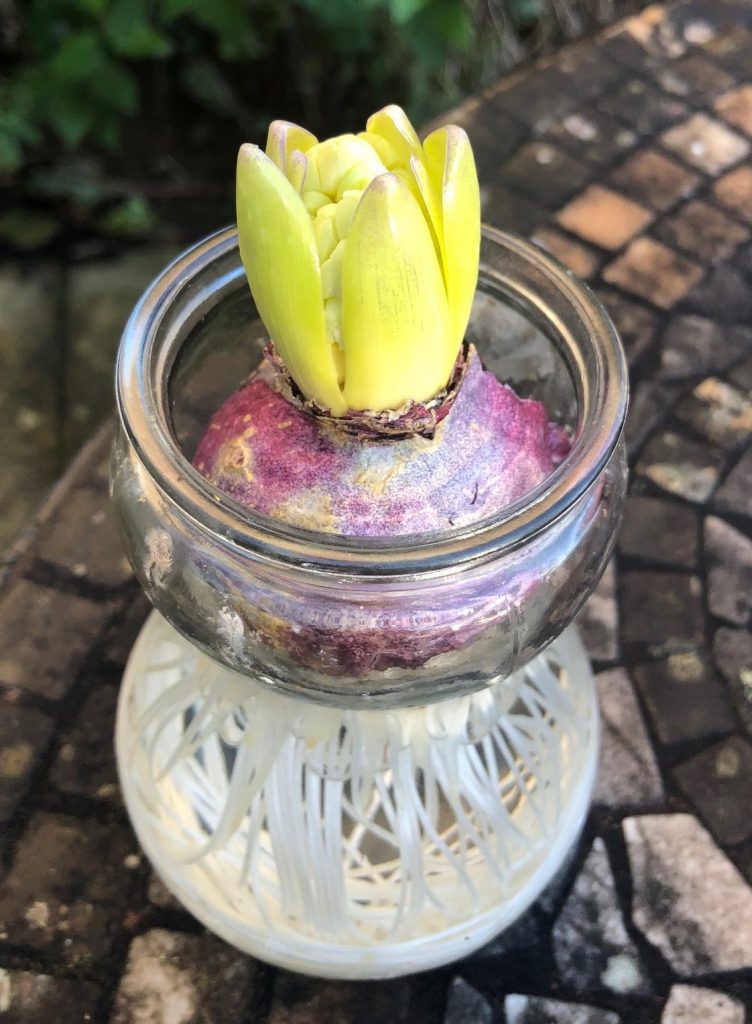
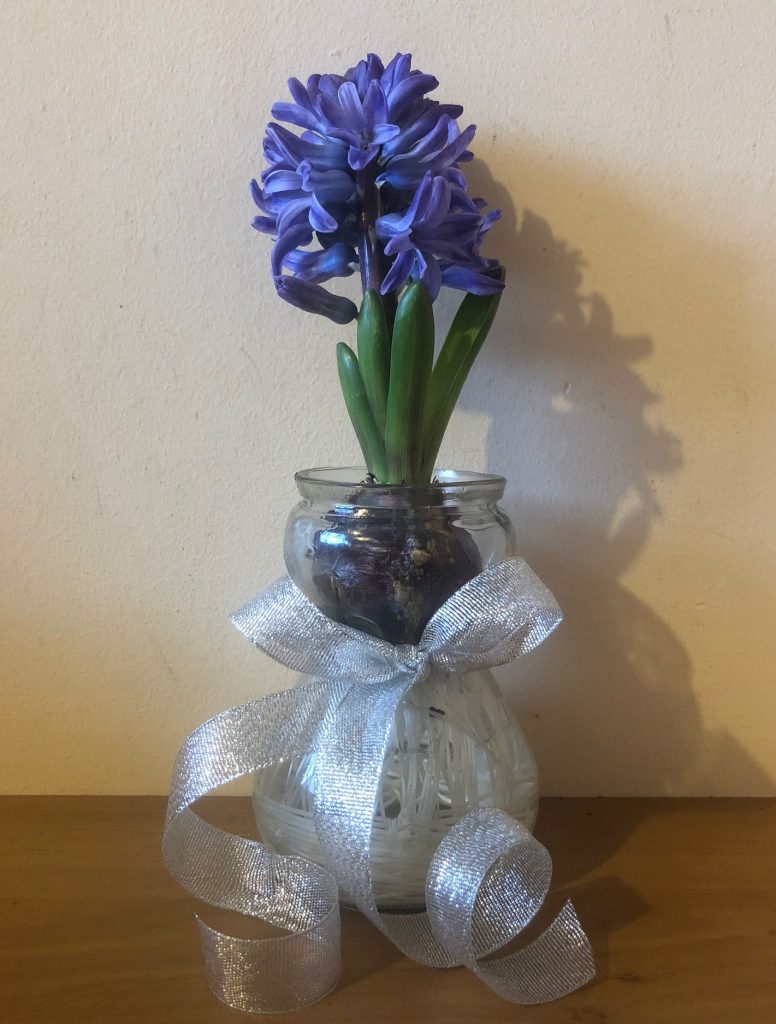
The images show a bulb placed in a vase on 16 September and the same bulb with roots on 9 October; the same bulb with a shoot before being moved to a windowsill on 13 December, and with a flower on 25 December.
Last, but not least: though pink flowers are lovely, according to an old tradition, Christmas hyacinths should be white and blue(!).
See Fireplace Decoration for Winter with Natural Materials for examples of how I used white home-grown hyacinths to decorate my fireplace for winter.
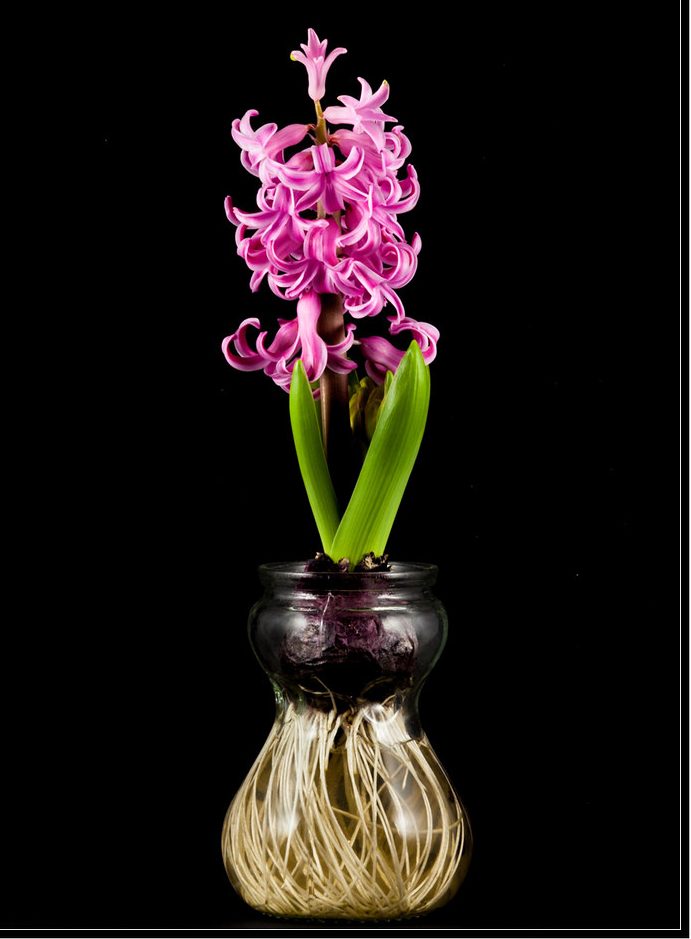
Image credits: ‘Van Olphen’ by nikontino; ‘Happy Holidays’ by Gunilla G; ‘Pink Hyacinth’ by Paul VanDeWerf
Related posts:
Sweet Violet (Viola Odorata) and Parma Violet: How to Grow Forgotten Treasures – Star of Nature
Growing Lily-of-the-valley in Winter
Reblooming Amaryllis: Two Ways to Grow Amaryllis Bulbs Indoors
Autumn crocus (Colchicum autumnale) – a Star of Early Autumn
